SOCIAL
Elon Musk Outlines His Vision for Twitter at Morgan Stanley Tech Conference
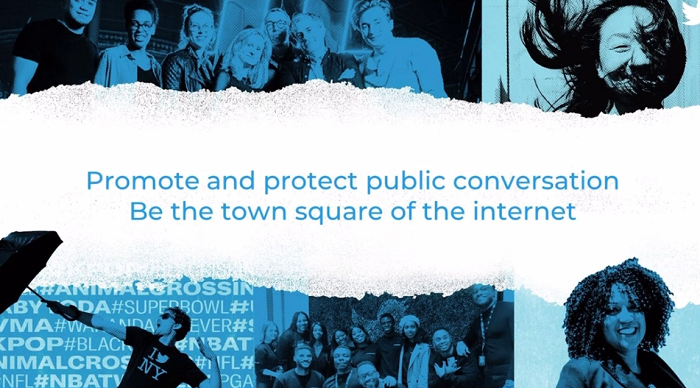
So what is Elon Musk’s long term vision for Twitter, and how does he plan to convert the app into a billion-user, money-making machine, as he’s repeatedly stated in interviews?
Today, we got a look at Elon’s broader strategic thinking around the app, along with some new updates on how Twitter 2.0 is progressing on various elements.
Musk made a new presentation on Twitter, and his other businesses, to the Morgan Stanley Tech, Media and Telecommunications Conference in San Francisco, where Musk offered insight into several key aspects, including their work on mitigating hate speech, the growth in usage of the app, and the grander vision to convert Twitter into a key payments and commerce app.
First off, Musk outlined his general vision for Twitter, and making it the ‘global town square’ once again.
Twitter has always had this as a defining goal, of sorts, though it moved away from the ‘town square’ framing in the latter years under former CEO Jack Dorsey, who became disillusioned with the inevitable calls that had to be made by Twitter management on what could and could not be shared in the app.
That’s been a defining element of Musk’s push to reform Twitter’s approach, by allowing more free and open speech, and ideally, letting the users decide what should be allowed, with Community Notes set to play a bigger role in enabling Twitter users themselves to police misinformation and untruths by adding contextual explainers to individual tweets.
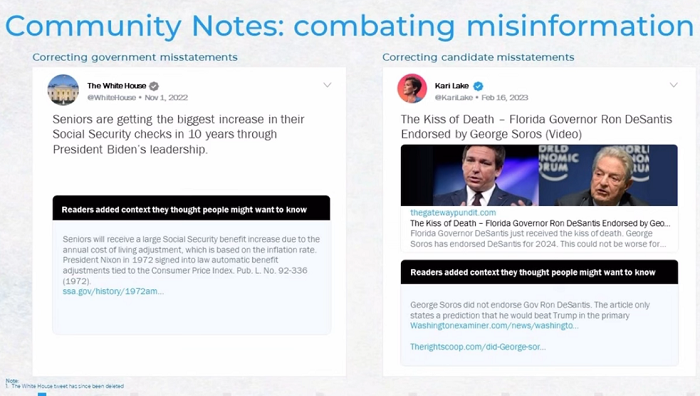
Musk also laid out Twitter 2.0’s core principles, which he hopes will eventually make Twitter a source of truth, by empowering input from all people.
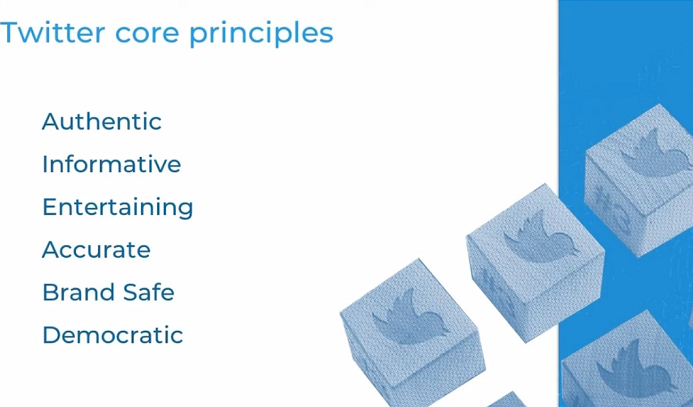
As per Musk:
“So the goal is to have Twitter be the best source of truth, the most timely and accurate source of truth, even if the truth is something we don’t want to hear or unpleasant or whatever, but have it be timely and accurate and where you can really understand what’s going on.”
Musk further explained that the media is currently able to control key narratives by choosing what to cover, and what gets top priority. But Twitter enables all people to decide what’s relevant faster, by facilitating more inputs. Which is why, in Musk’s view, it’s critical that Twitter allows free and open speech, as much as possible.
“The bedrock of a functioning democracy has to be free speech and a level playing field. That’s why it’s the first amendment. It was the first thing they did, like we’ve got to ensure freedom of speech. And why did they do that? Because where they came from there wasn’t freedom of speech, and once you lose freedom of speech, you don’t get it back. So that’s why we must protect it at all costs.”
This has been a key element of Musk’s broader push at the app, which he’s reinforced with his own tweets on various controversial topics.
Which then leads to concerns around what people might actually say in the app, and how that could lead to harm and negative behaviors. On this front, Musk also outlined Twitter’s progress in addressing hate speech, which Musk says is now down 50% from when he took over at the app.
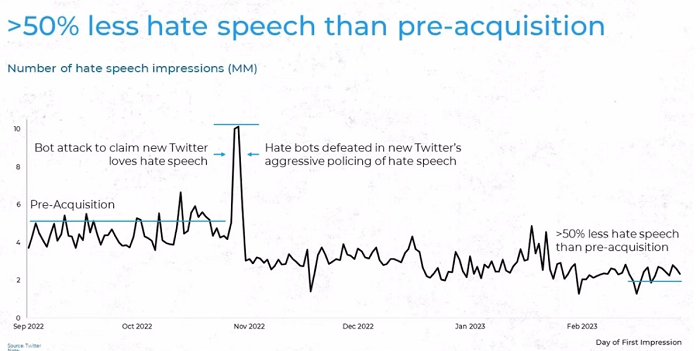
Some experts have questioned Twitter’s metrics on this, and we don’t have access to exactly what this data means – but based on the key elements that the Twitter 2.0 team is measuring, it is working to address potentially harmful elements, which should lead to an improved user experience.
Of course, letting tens of thousands of previously banned users back on the app seems to work counter to this goal, but again, based on the metrics that Musk and his team are tracking, it’s seemingly seeing improvement.
The same can also be said for child exploitation content.
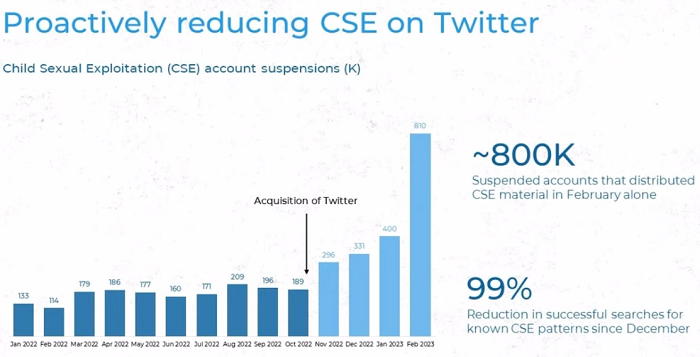
Musk has repeatedly claimed, as this graph shows, that Twitter is doing more to address CSE content than Twitter has ever done in the past. Experts have refuted these figures as well, but Twitter is seemingly, by at least some measures, taking more action to address this element, which Musk says will always be priority number one at the app.
Though larger changes remain problematic. As we saw earlier this week, Twitter does seem to be becoming increasingly unstable, leading to larger outages and impacts, likely due to reduced oversight as a result of staff cuts.
Musk admitted that this is a problem, noting that the current code base is prone to failure when making even the slightest change.
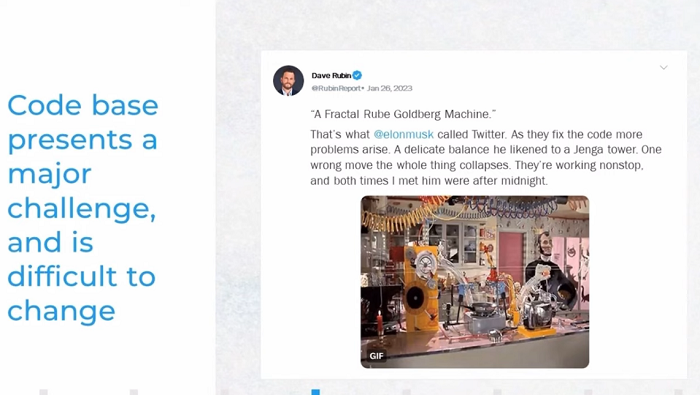
But still, even with increased error rates, Musk says that Twitter usage is at an all-time high, with more than 250 million daily active users.

It’s worth noting that this chart measures up to Q4, and reports have suggested that Twitter usage has declined significantly since then. But even so, Twitter’s popularity has increased under Musk – not to the levels that Musk would obviously like (in regards to that billion-user target), but it is on track to see improvement, if it can get all of its elements into line.
On that front, Musk briefly discussed his plans to improve Twitter’s ad relevance, and drive better performance through various targeting measures.

Some of this revolved around simple measures, like keyword targeting, which Twitter has previously moved away from due to reduced advertiser performance. Elon is now looking to implement more direct targeting options like this, with advertisers able to highlight their content within related discussions in the app.
Finally, Musk discussed his longer-term vision for Twitter, and making it into the ‘everything app’, which mostly revolves around integrating payments.
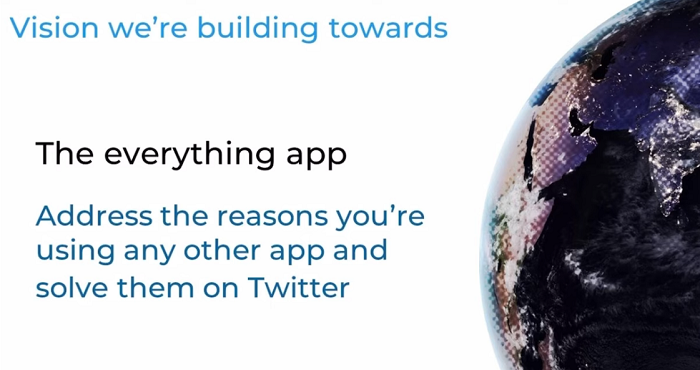
“I think it’s possible to create a very powerful finance experience. Basically, PayPal is kind of like a halfway version of what I think could be done in payments and finance. So, let’s say you want to be able to send money easily from one account on Twitter to another account effortlessly, with one click, you want to be able to earn interest on that money, you want to be able to have debt, so you can let your interest can go negative. Basically, I think it’s possible to become the biggest financial institution in the world, just by providing people with convenient payment options. We don’t have the time to go into it in detail here, but if we just make the app more and more useful, people will use it more and it’ll be great.”
The vision is that, eventually, by enabling payments via tweet, Twitter will be able to facilitate more types of transactions, which will make it a more useful app, for all different purposes, similar to how Chinese messaging apps like WeChat have become essential utilities in that region.
Of course, Meta’s also trying to facilitate the same thing, and just recently got approval to expand WhatsApp payments usage in Brazil, while it’s also gaining traction with WhatsApp payments in India, likely the key market for such a shift.
But success in this area will not come easy, especially amid ongoing regulatory scrutiny, and given Musk’s defiant attitude to other regulatory groups, like the SEC, it’s hard to see Twitter ever gaining the approval required to facilitate such.
Still, that’s the longer-term vision, that Twitter will become a key source of truth in journalism, and a key utility in facilitating more types of payments, which will then make it a critical app for many more people. It’s an optimistic strategy, which requires many things to go right, but Musk says that, after massive cost-cutting, the app is, potentially, on track to be cash positive by the end of this year.
That, at the least, gives him firmer footing to build from, and maybe, Elon’s vision is beyond what others can yet see for the app.
You can check out Elon’s full presentation to the Morgan Stanley TMT Conference here.

















